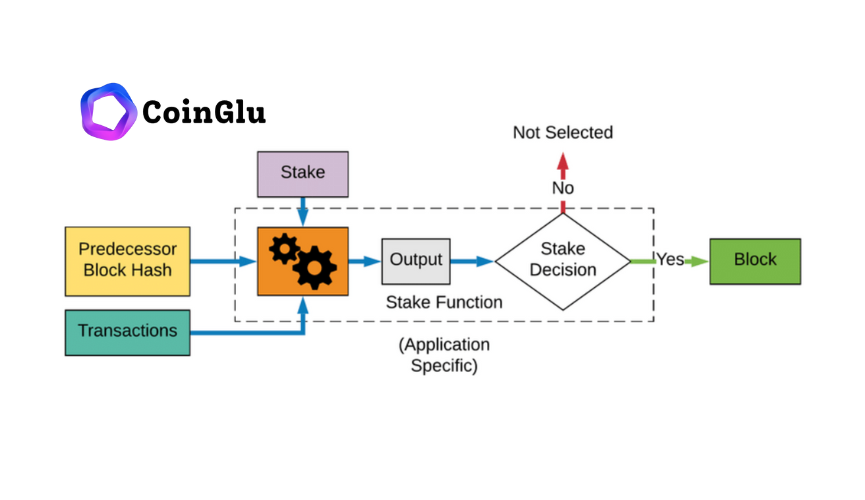Learn Proof-of-Stake (PoS) in Cryptocurrency How does PoS work ?

Proof of stake – You might be wodering what is PoS in cryptocurrencies and how it works well in this blog post we are discussing Proof-of-Stake (PoS) in Cryptocurrency How does PoS work,
Proof-of-Stake (PoS) – In the ever-evolving landscape of cryptocurrencies, consensus mechanisms play a pivotal role in ensuring the security and efficiency of blockchain networks. One such consensus mechanism gaining widespread attention is Proof-of-Stake (PoS). PoS represents a fundamental departure from the traditional Proof-of-Work (PoW) system, offering a novel approach to validating transactions and maintaining network integrity. In this article, we delve into the intricacies of PoS, exploring its principles, benefits, challenges, and its significance in the broader crypto ecosystem.

What is Proof-of-Stake (PoS) ?
Proof-of-Stake (PoS) is a consensus mechanism utilized by blockchain networks to achieve distributed consensus and validate transactions. Unlike the energy-intensive PoW mechanism employed by cryptocurrencies like Bitcoin, where miners compete to solve complex mathematical puzzles to add new blocks to the blockchain, PoS operates on a different premise.
In a PoS system, validators, also referred to as stakeholders, are chosen to create new blocks and validate transactions based on the number of coins they hold and are willing to “stake” as collateral. The probability of being chosen as a validator is directly proportional to the amount of cryptocurrency a participant holds and is willing to lock up in a designated wallet, also known as a staking wallet.
How Does Proof-of-Stake Work ?
Validators Stake their Cryptocurrency: Participants in a PoS network lock up a certain amount of cryptocurrency in a staking wallet to become eligible for the role of a validator. The size of the stake typically determines the probability of being selected to validate transactions and create new blocks.
Block Validation and Forging: Validators are chosen to create new blocks and validate transactions based on their staked amount and other factors such as network consensus algorithms. Upon selection, validators propose and validate new blocks by adding transactions to the blockchain.
Consensus and Block Confirmation: In PoS, consensus is achieved through a process of collective agreement among validators. Once a block is proposed and validated by a certain percentage of validators, it is added to the blockchain, and the transactions within it are confirmed.
View the top PoS coins o CoinMarketCap
Key Points of PoS Proof of stake
Reward Distribution: Validators are rewarded for their participation in block validation and maintaining network security. These rewards often come in the form of newly minted coins or transaction fees associated with the validated transactions.
Benefits of Proof-of-Stake:
Energy Efficiency: PoS consumes significantly less energy compared to PoW, as it does not rely on computationally intensive mining processes. This makes PoS environmentally friendly and more sustainable in the long term.
Security and Decentralization: PoS encourages greater decentralization by distributing power among validators based on their stake in the network. This reduces the risk of centralization and 51% attacks, where a single entity controls the majority of the network’s computing power.
Economic Incentives: PoS incentivizes participants to hold and stake their cryptocurrency, as they are rewarded with additional coins for contributing to the network’s security and integrity. This creates a self-sustaining ecosystem where stakeholders are motivated to act in the best interests of the network.
Challenges and Considerations:
Wealth Centralization: PoS systems may lead to wealth centralization, as participants with larger stakes have a greater influence over the network. This could potentially create oligarchies where a small number of stakeholders wield significant control.
Nothing at Stake Problem: The “nothing at stake” problem refers to a scenario where validators have little to lose by supporting multiple conflicting chains simultaneously, as there are no costs associated with mining competing chains, unlike in PoW. Various mechanisms, such as slashing penalties, are implemented to mitigate this issue.
Network Security: While PoS is generally considered secure, the security of a PoS network depends on the distribution of stakes and the effectiveness of its consensus algorithm. Vulnerabilities in these areas could compromise the network’s security and integrity.
Proof-of-Stake (PoS) represents a significant advancement in blockchain consensus mechanisms, offering a more energy-efficient and economically incentivized approach to securing and validating transactions. While PoS has garnered widespread adoption and acclaim within the crypto community, it is not without its challenges and considerations. As blockchain technology continues to evolve, PoS is poised to play a pivotal role in shaping the future of decentralized finance and digital asset ecosystems.
View more posts like this fro our Cryptocurrencies category and learn more




Leave a Reply